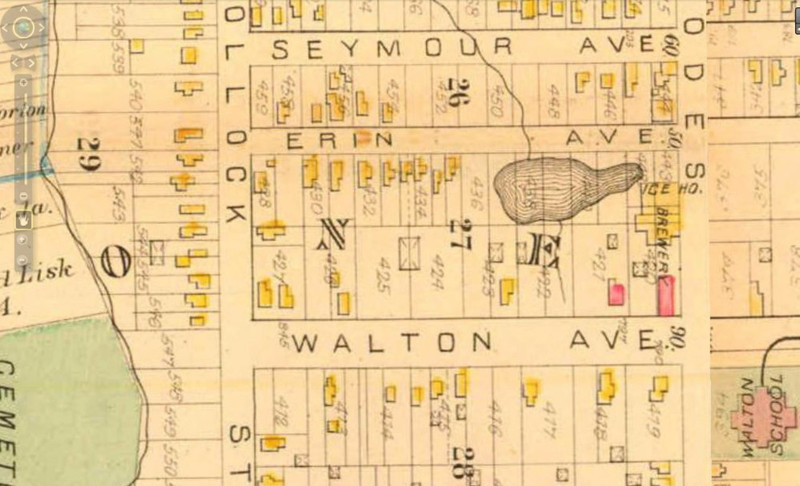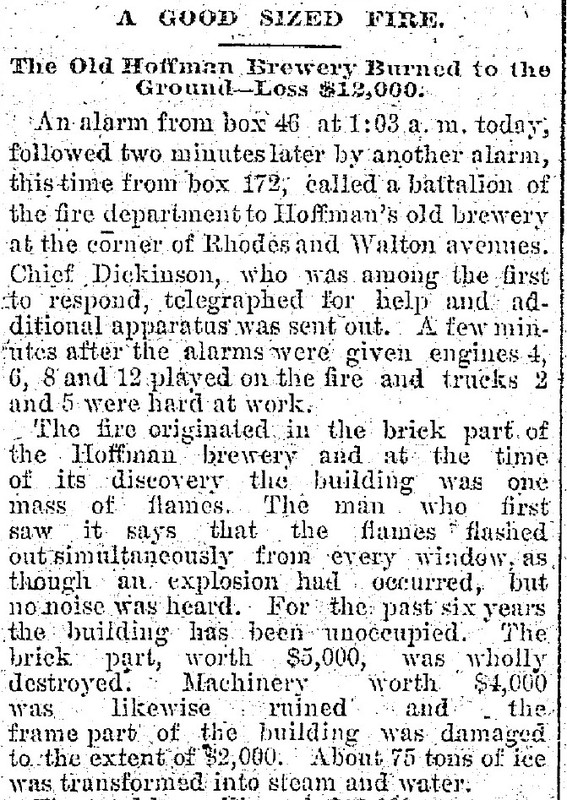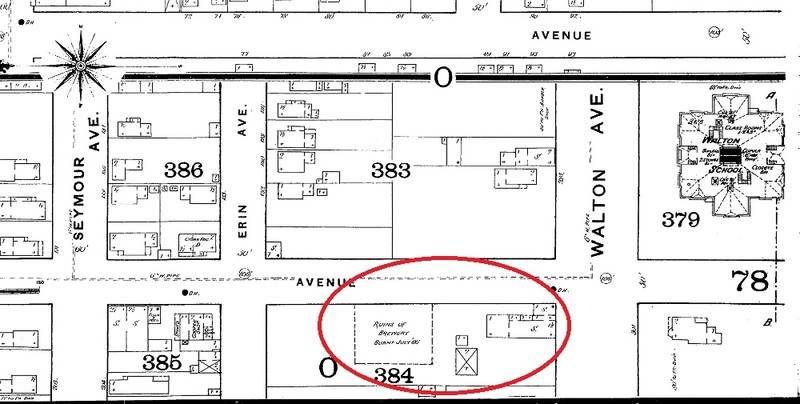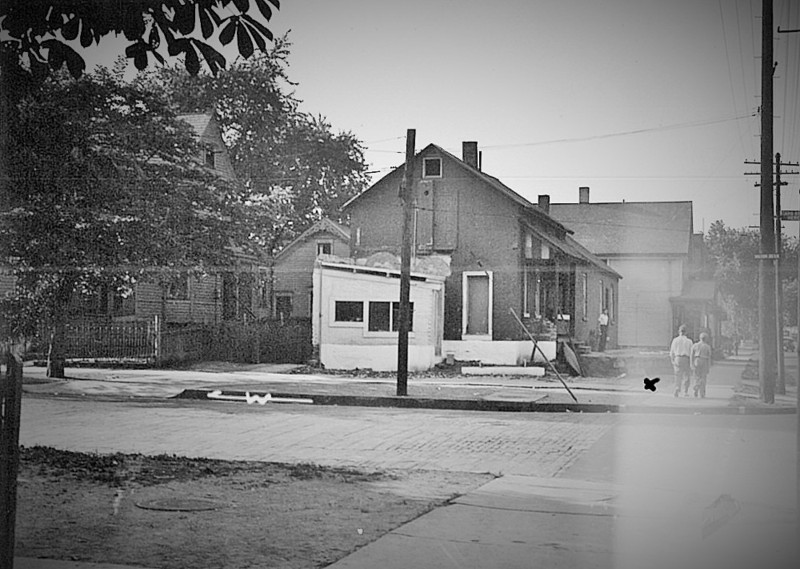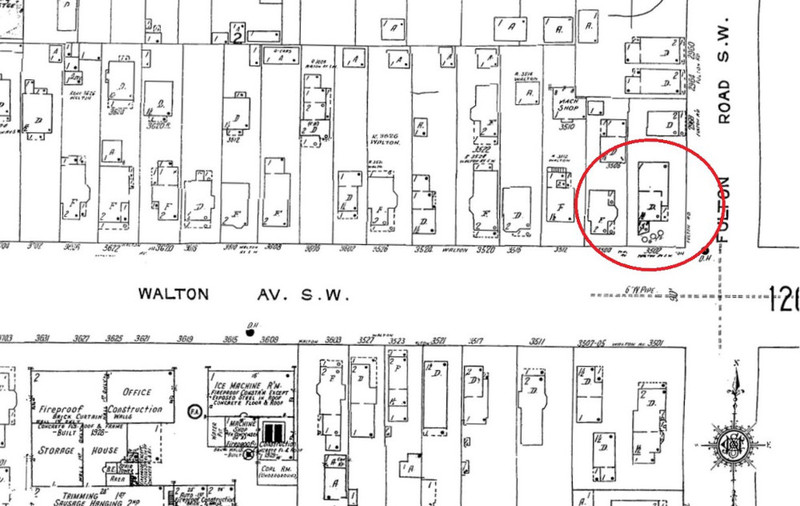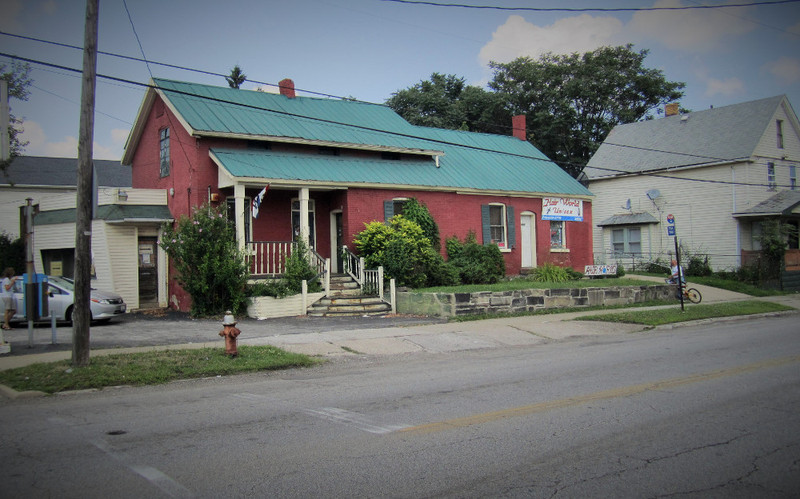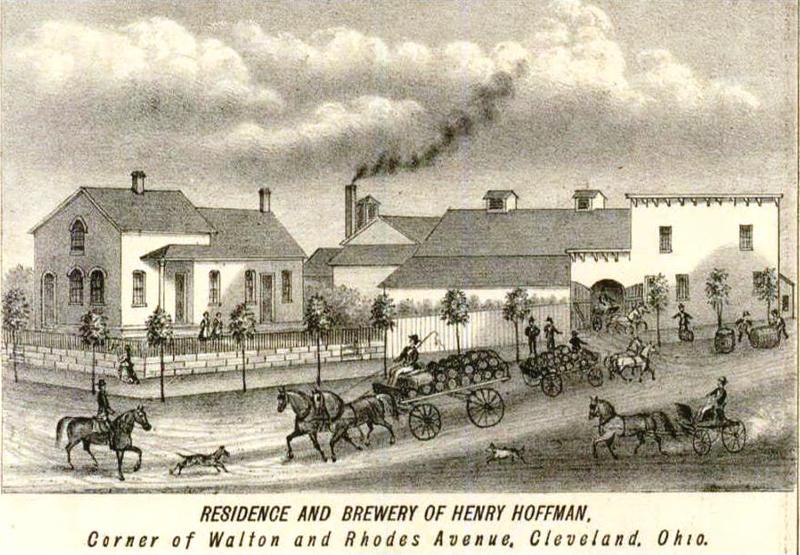
On the northwest corner of Walton Avenue and Fulton Road there is a little red brick house that is one of the oldest houses in the Clark-Fulton neighborhood. It is also all that is left of Henry Hoffman's dream to build a great brewery in Cleveland.
In 1845, eighteen year old Hoffman immigrated from Hesse-Cassell, Prussia (now central Germany) to the United States. He initially settled in Independence, Ohio, where he married, started a family, and worked as a farmer on land he owned. Sometime just as the Civil War was winding down, and for reasons lost to history--although perhaps it was because of the death of his first wife, Hoffman moved to Cleveland. He remarried in 1865 and, in 1868 at age 41 and with his dream in mind, he purchased a large lot of land that stretched along the west side of Rhodes Avenue (Fulton Road) from Walton Avenue nearly all the way to Erin Avenue. By 1870, he had built and was operating a small brewery on the land in a couple of commercial buildings he had constructed. He had also built, and he and his family were living in, that little red brick house. Today we would say that he was now living the dream.
According to Cleveland directory records, Hoffman's Brewery was one of more than a dozen operating here in 1870. Many, if not most, of these breweries were, like Hoffman's, owned by German immigrants and were built to serve neighborhood "needs." Within a few years, however, Hoffman had enlarged the brewery and, in 1878, he added a new brick saloon. This was, according to one industry publication that called him one of Cleveland's prominent brewers, so that his customers might "get a glass of lager without interruption to the men at work in the brewery." Hoffman must have felt that he was well on his way to becoming as large and as successful a brewer as fellow German immigrant Carl Gehring, whose fast-growing brewery was located just a mile away on West 25th Street, a block south of where the West Side Market stands today.
And why shouldn't Hoffman have felt that way? He had enlarged the capacity of his brewery so that it could produce 8,000 barrels (248,000 gallons) of German lager beer per year. He was carefully grooming his son William to help him further grow the business. He was a leader in several important Cleveland fraternal organizations. And, in 1874, he had been elected Councilman for Ward 12. This was the west side ward which encompassed almost all of what today are the Clark-Fulton and Stockyards neighborhoods of Cleveland
As it turned out, Henry Hoffman did not become the next Carl Gehring. Just two years later, in 1880, the local newspapers began reporting that Ward 12 Councilman Hoffman was very ill. And, on November 23, 1880, he died. The cause of death was said to be stomach cancer. Hoffman, who had just been re-elected to Council the previous year, was only 53 years old.
A grand funeral was held in Cleveland for Henry Hoffman. Resolutions of condolence were passed by City Council. Flags flew at half-mast in Public Square (then called Monumental Park). A moving eulogy was delivered (in German) by Rev. Klein at the service held at the Zion Church on Jennings Avenue (West 14th Street) in what is today the Tremont neighborhood. And, with his fellow councilmen serving as pall-bearers, Hoffman was buried at Riverside Cemetery with all the pomp and ceremony that his position as member of City Council and leader in the business community then warranted.
After Hoffman's death, his son William and a partner attempted to run the brewery, but within two years they were hopelessly in debt and were being sued by a number of creditors. The little red brick house and the brewery, ice house and all, were sold to one of those creditors, Miller Spangler, a millionaire maltster. Spangler used part of the brewery building for storage of his malt and rented the rest of the building to others. He also rented out Hoffman's little red brick house. A few years later, the brewery and nearby ice-house mysteriously burned to the ground. What was left of those buildings was later razed. Then, new houses were built on the land where the brewery once stood. Eventually, there was no trace of Henry Hoffman's dream left standing except for the little red brick house on the corner of Walton and Fulton.
In the decades that followed the fire, the house was initially used as a store. Then it was converted into a two-family dwelling. Later, an addition was built on the south side of the building, and various small retail businesses operated out that part of the house, while the rest of the house was used as a residence. Finally, the house's last resident sold the property in 1990 and, since then, it has been used exclusively as the retail business office of a local locksmith.
Images


